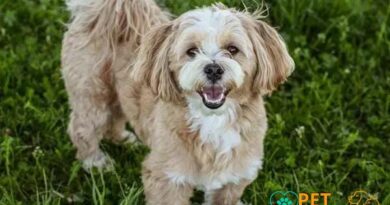What is Open-ended
What is Open-ended?
The term “open-ended” refers to questions or prompts that allow for a wide range of responses, rather than a simple yes or no answer. In the context of dog training and behavior, open-ended questions can be particularly useful for understanding a dog’s needs, preferences, and behaviors. For instance, asking an owner to describe their dog’s favorite activities can yield valuable insights into the dog’s personality and energy levels.
Open-ended Questions in Dog Training
In dog training, open-ended questions encourage owners to think critically about their dog’s behavior and training progress. Instead of asking, “Does your dog sit on command?” a trainer might ask, “How does your dog respond when you ask them to sit?” This approach not only provides more information but also fosters a deeper connection between the trainer and the owner, leading to more effective training strategies.
The Importance of Open-ended Responses
Open-ended responses can reveal underlying issues that may not be apparent through closed questions. For example, if a dog owner describes their dog’s anxiety during thunderstorms, it opens the door to discussing potential solutions, such as desensitization techniques or creating a safe space for the dog. This dialogue is essential for tailoring training methods to meet the specific needs of each dog.
Examples of Open-ended Questions for Dog Owners
When working with dog owners, trainers can utilize various open-ended questions to gather comprehensive information. Questions like “What behaviors do you find most challenging with your dog?” or “Can you describe a typical day in your dog’s life?” can help trainers understand the dog’s environment and routine, leading to more personalized training plans.
Open-ended vs. Closed Questions
Understanding the difference between open-ended and closed questions is crucial for effective communication. Closed questions typically limit responses to a simple “yes” or “no,” while open-ended questions invite elaboration. For example, asking “Does your dog like to play fetch?” is closed, whereas “What games does your dog enjoy playing?” encourages a more detailed response, providing richer information for the trainer.
Utilizing Open-ended Questions in Behavioral Assessments
During behavioral assessments, open-ended questions play a vital role in gathering information about a dog’s past experiences and current behavior. By asking owners to share their observations and concerns, trainers can identify patterns and triggers that may influence the dog’s behavior. This information is crucial for developing effective behavior modification plans.
Encouraging Open Dialogue with Dog Owners
Creating an environment where dog owners feel comfortable sharing their thoughts and experiences is essential for successful training. Open-ended questions foster this dialogue, allowing owners to express their concerns and insights freely. This collaborative approach not only enhances the training process but also empowers owners to take an active role in their dog’s development.
Benefits of Open-ended Questions in Dog Care
Open-ended questions can significantly enhance the overall care and training of dogs. They allow for a more nuanced understanding of a dog’s behavior, preferences, and needs. This understanding can lead to better training outcomes, improved owner satisfaction, and ultimately, a happier and healthier dog. By prioritizing open-ended communication, trainers and owners can work together more effectively.
Implementing Open-ended Strategies in Dog Training
To effectively implement open-ended strategies in dog training, trainers should practice active listening and encourage owners to elaborate on their responses. This approach not only provides valuable insights but also builds trust and rapport between the trainer and the owner. By fostering an open dialogue, trainers can better support owners in their journey to train and care for their dogs.



